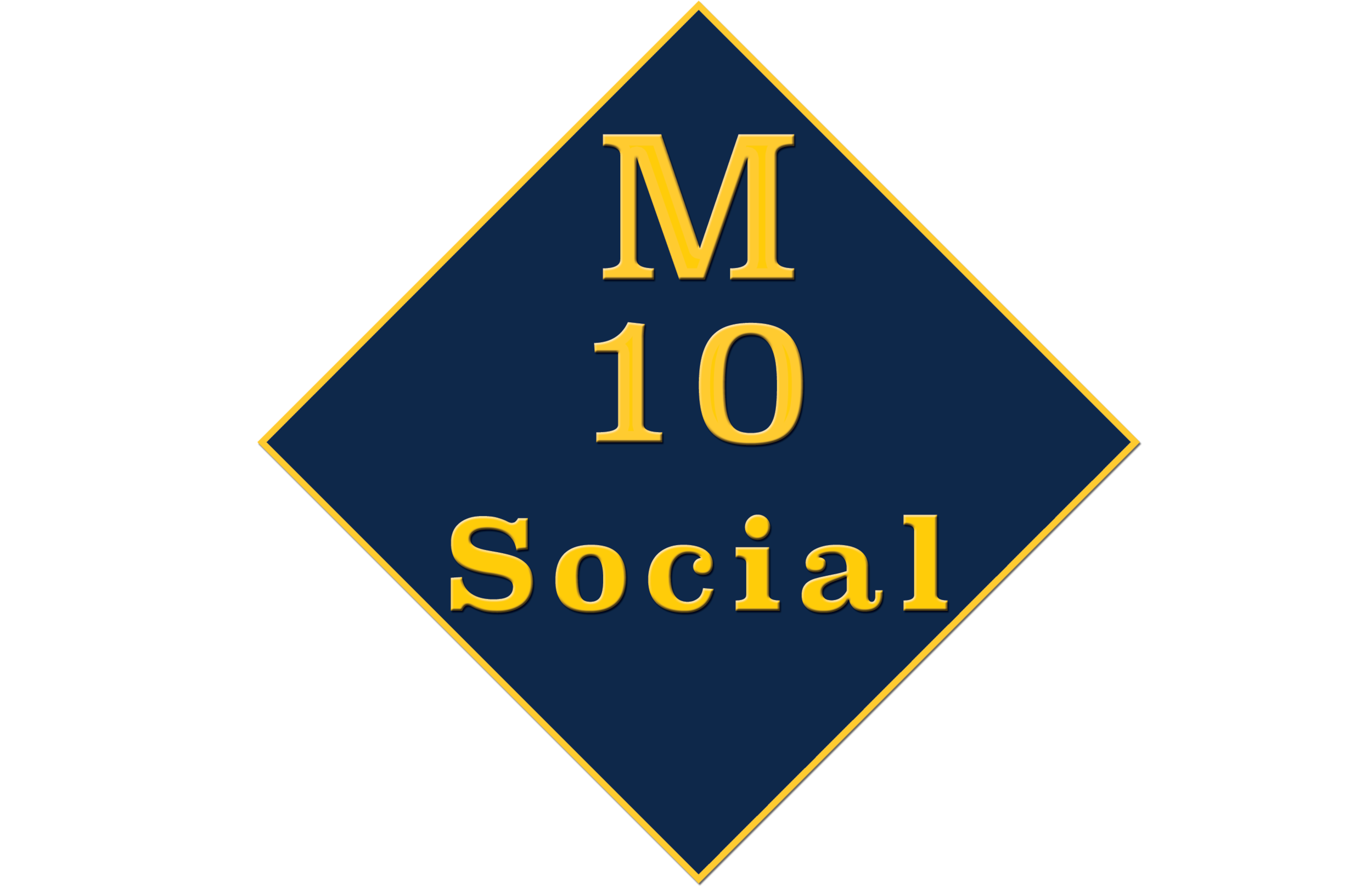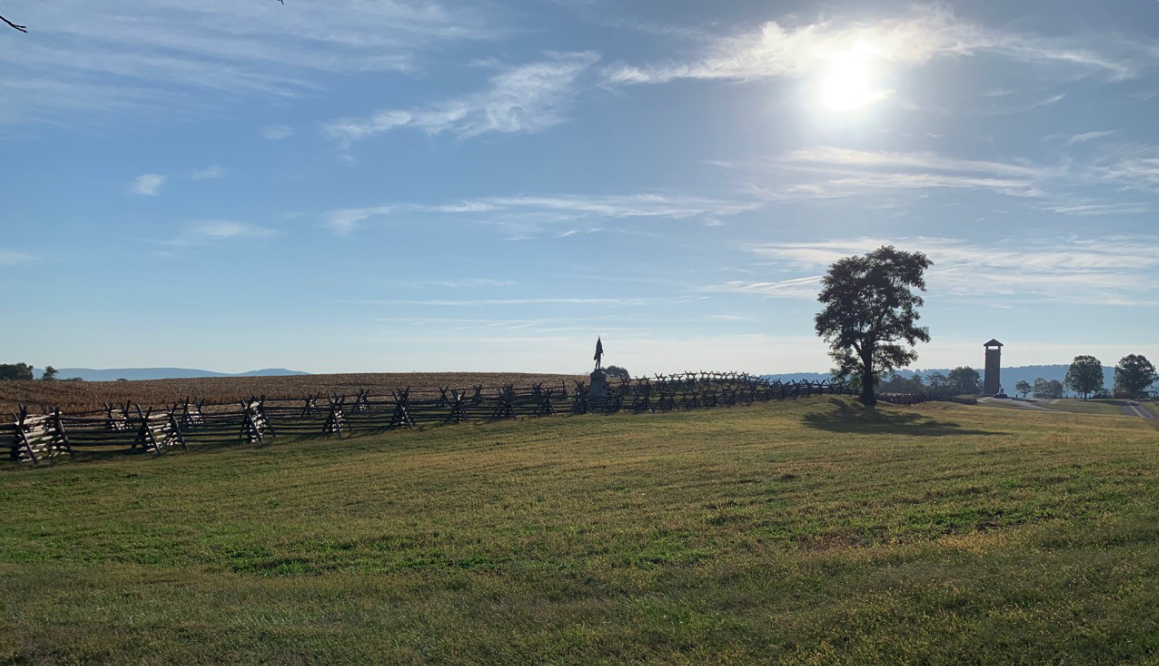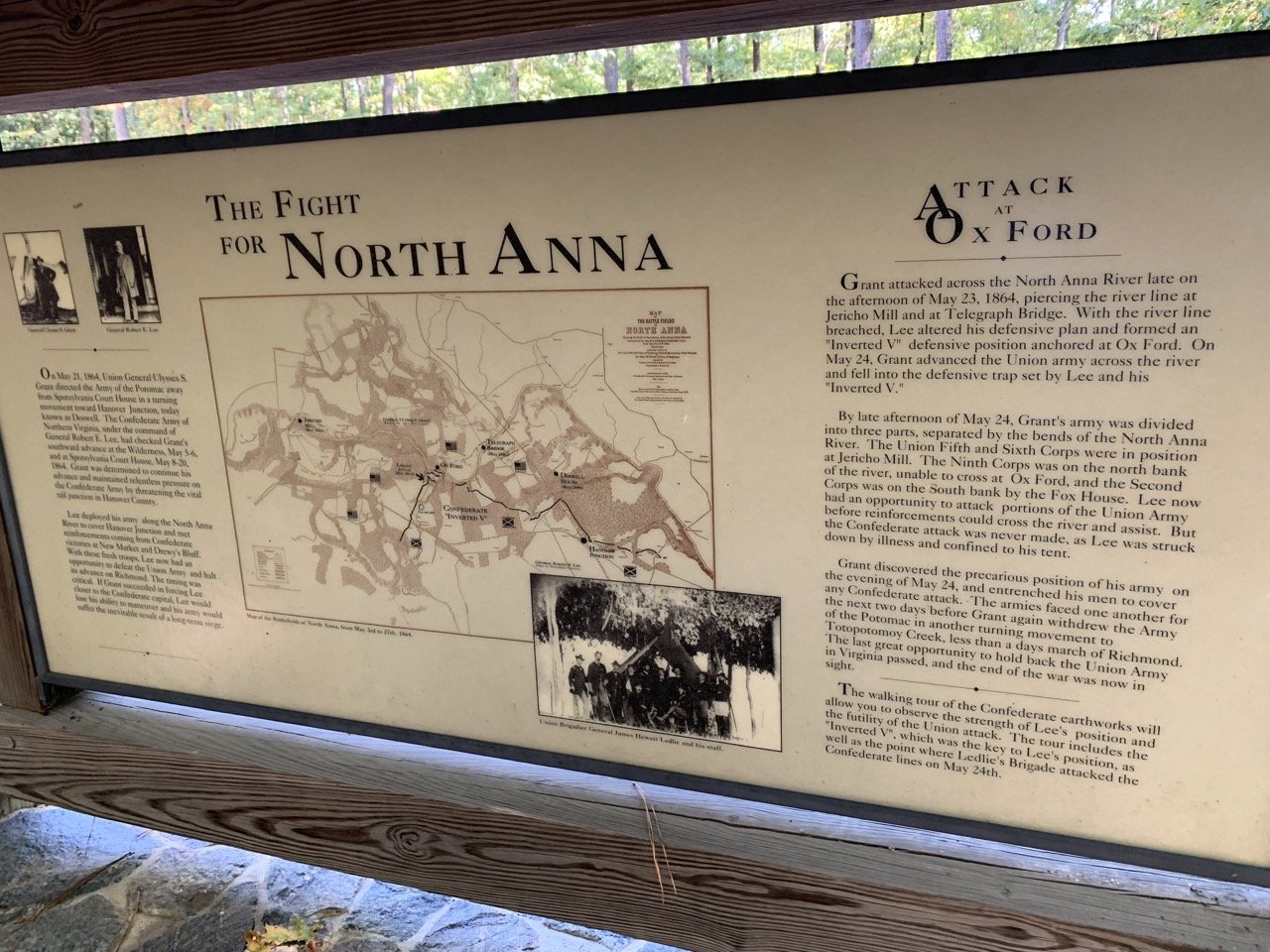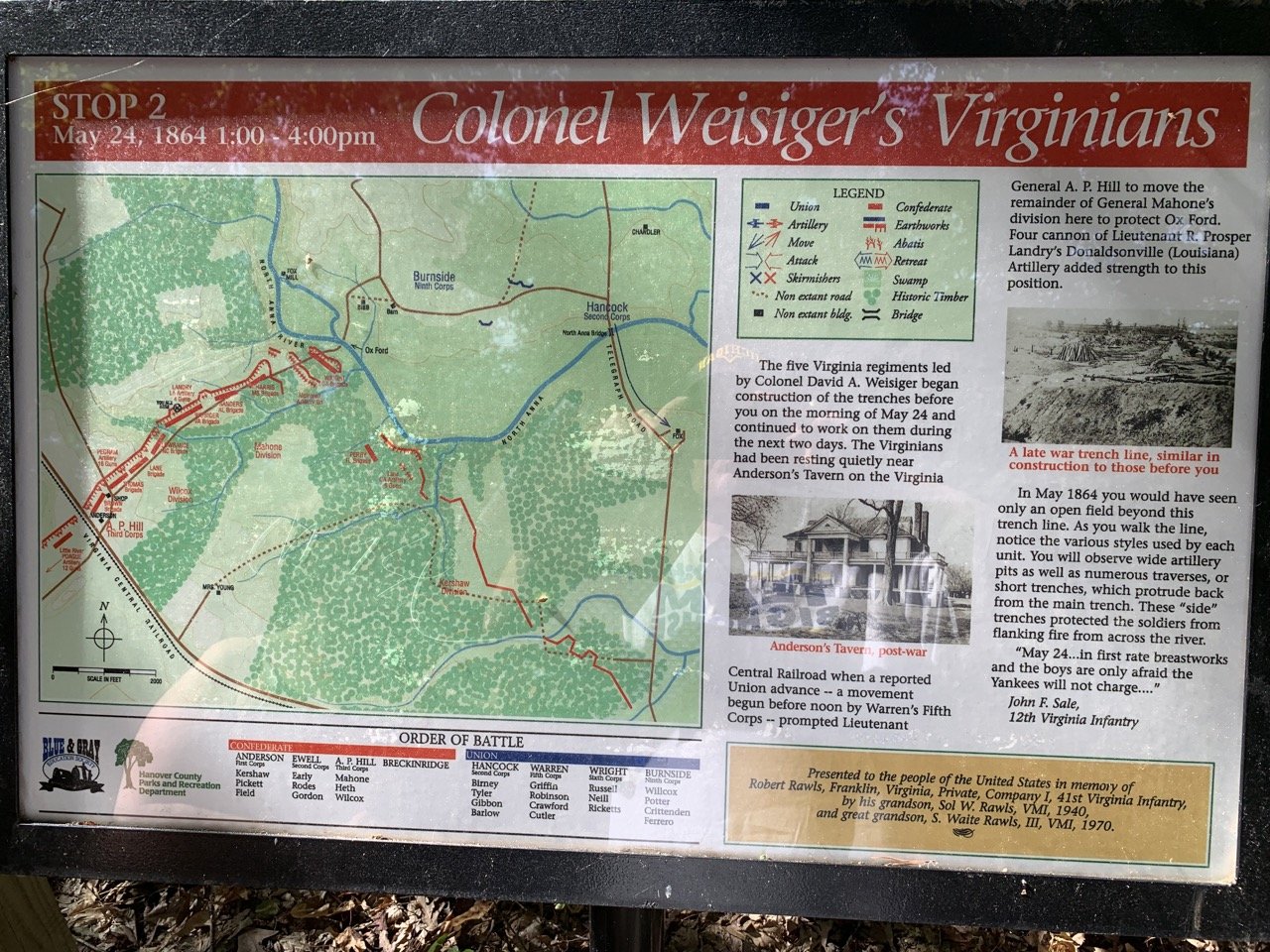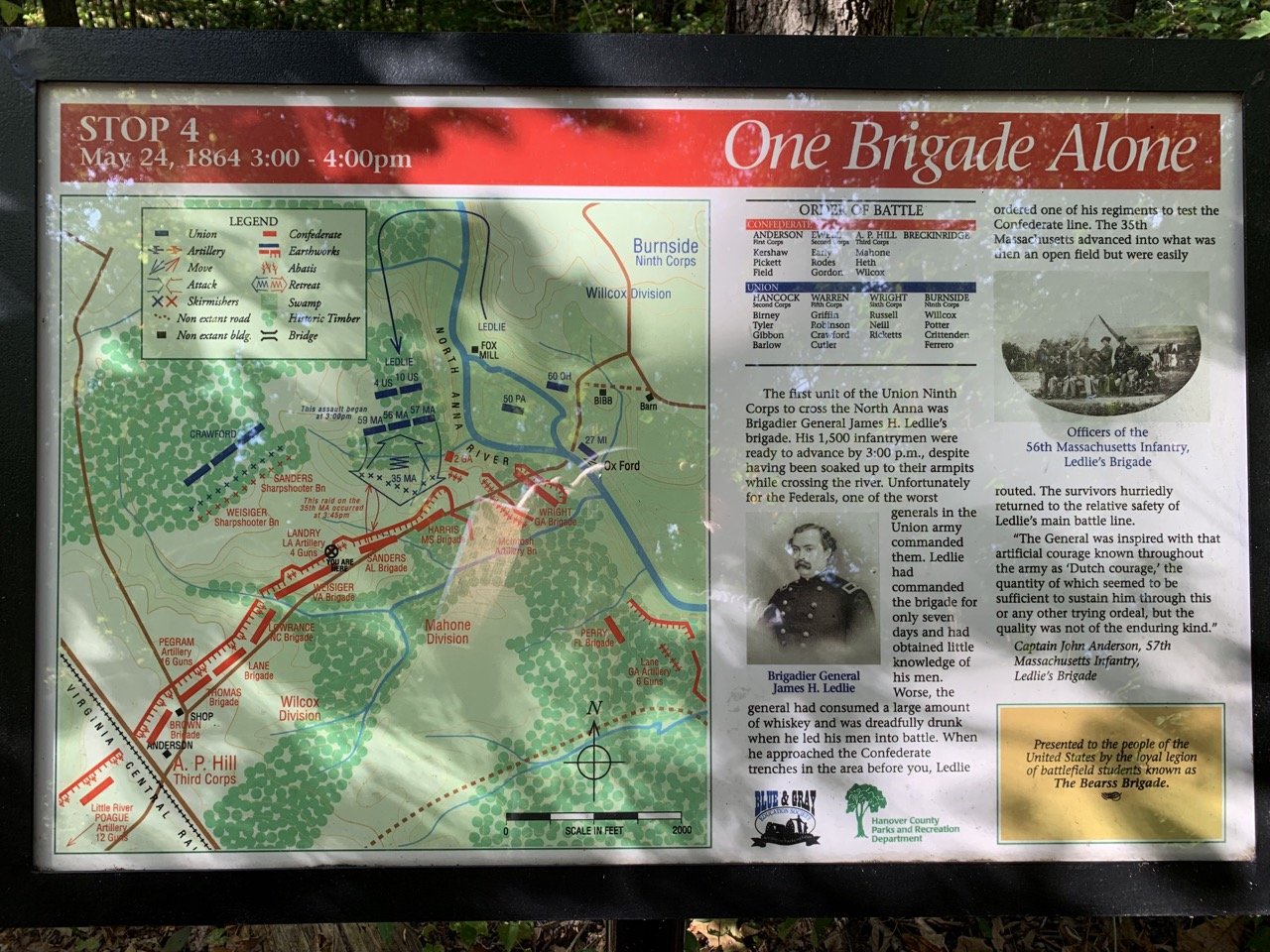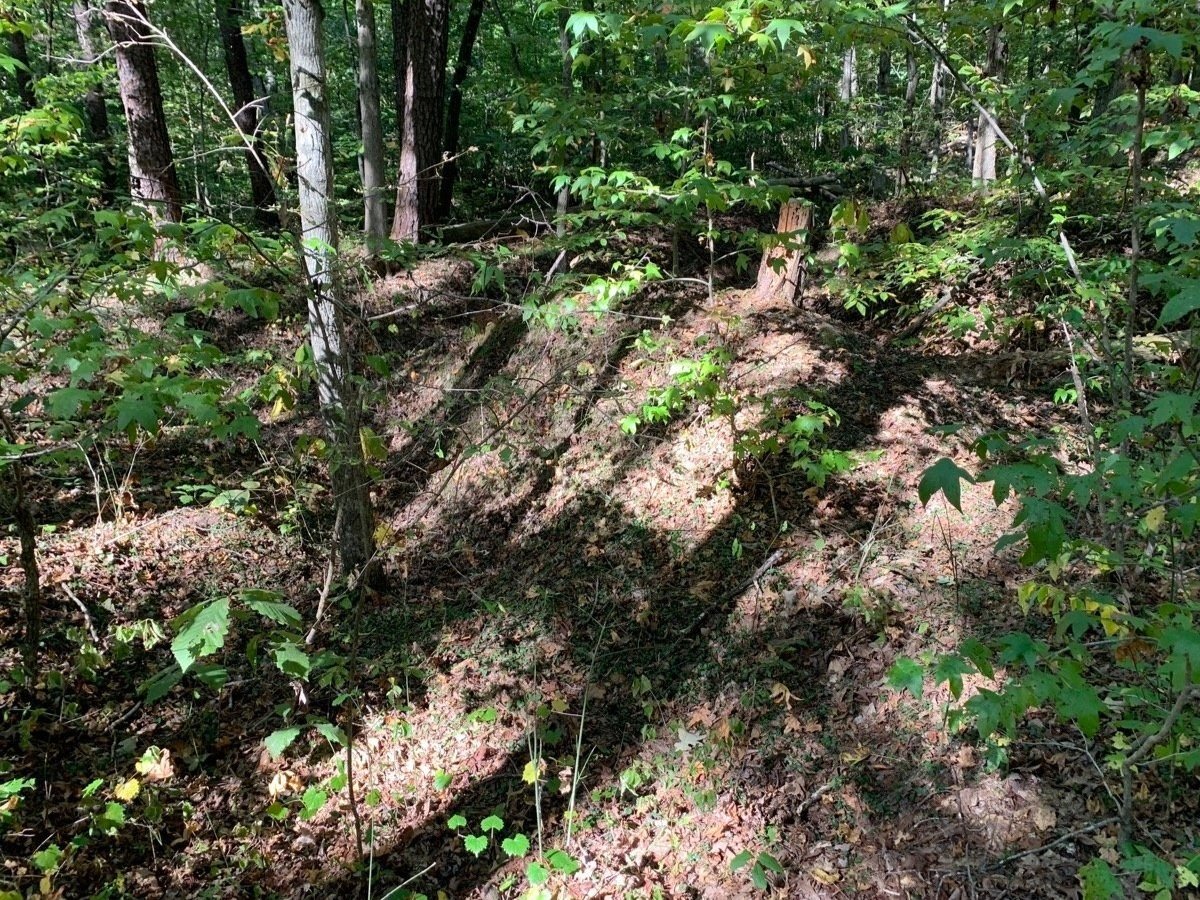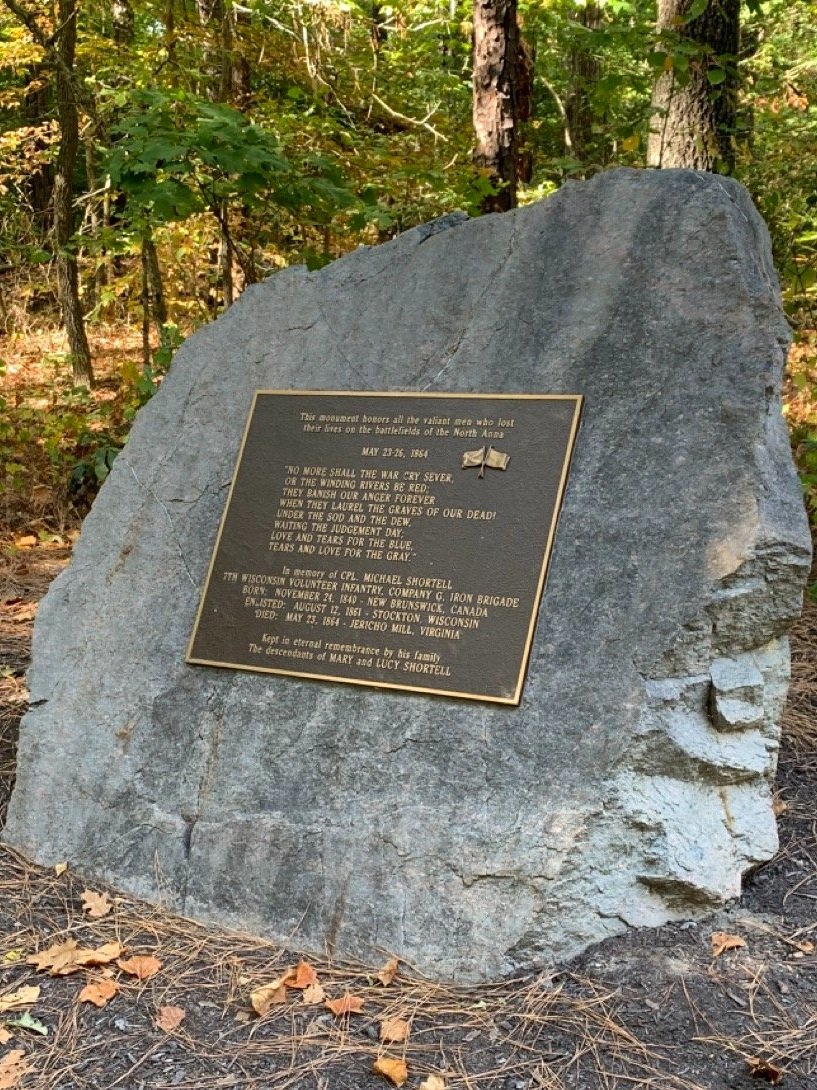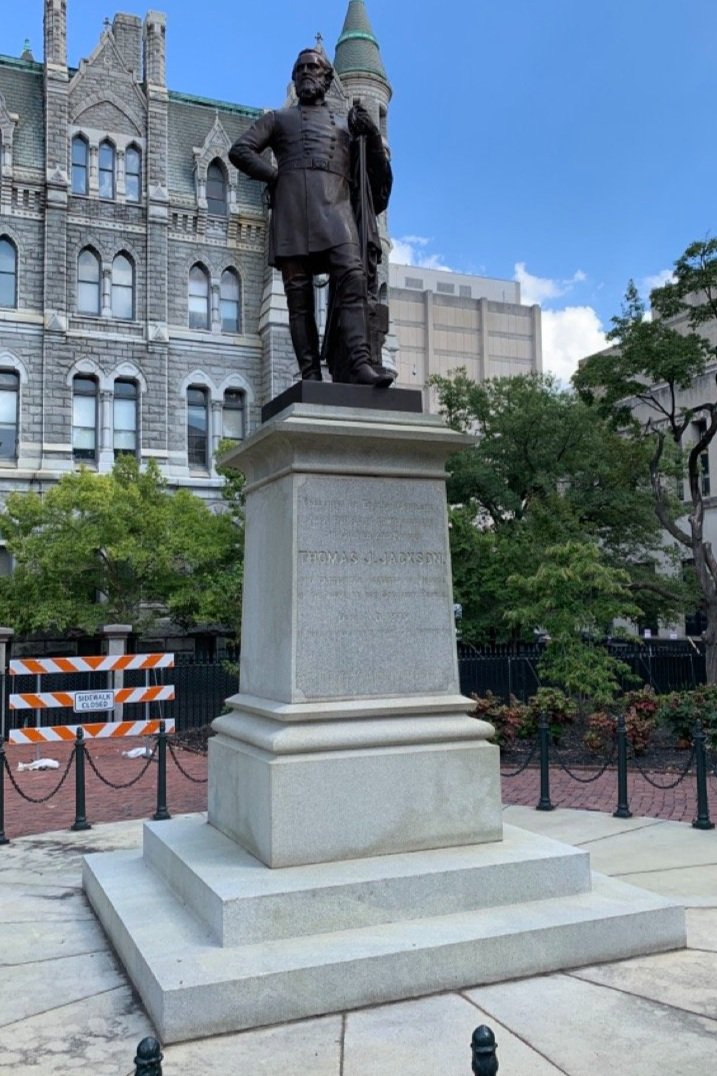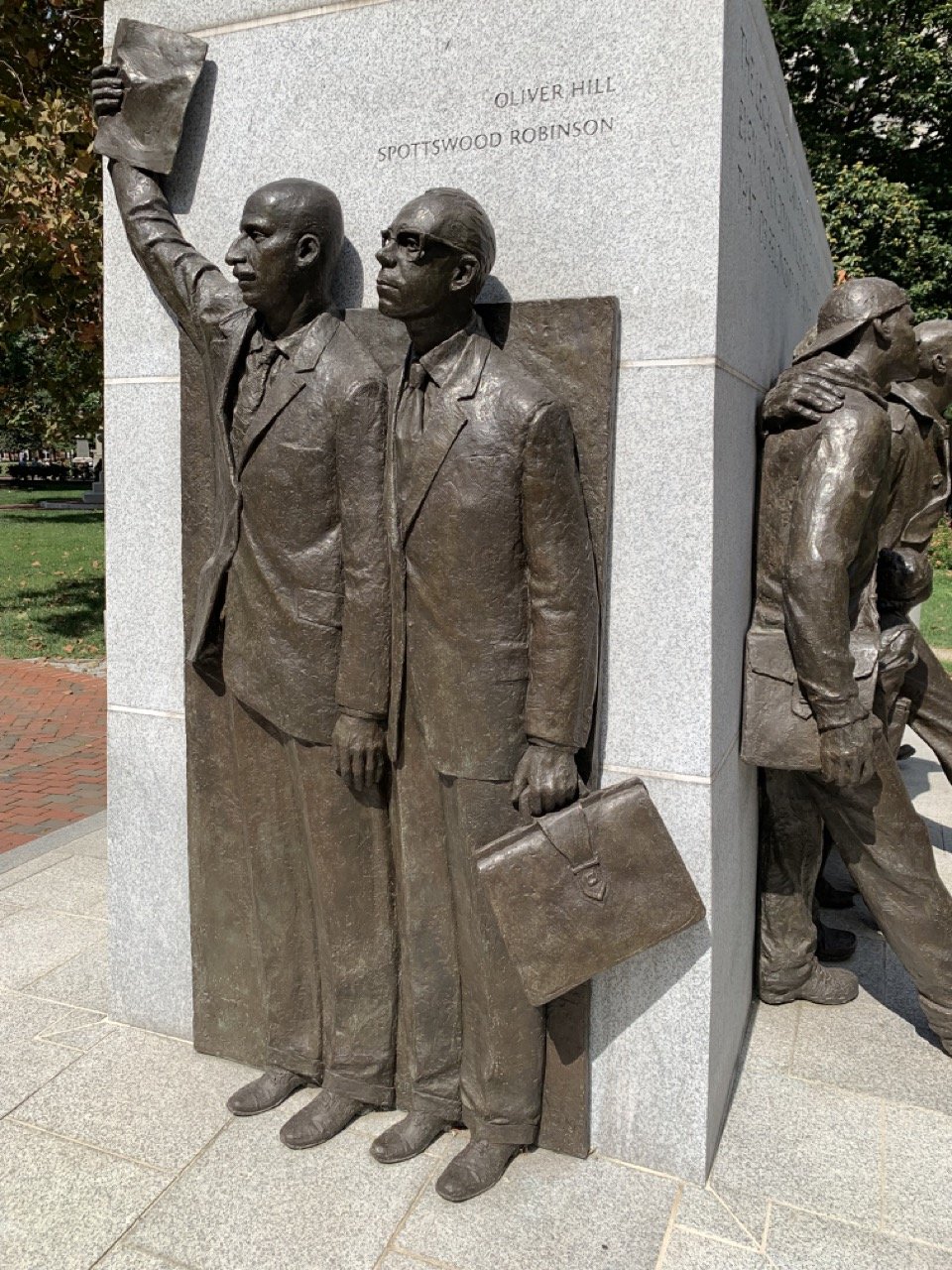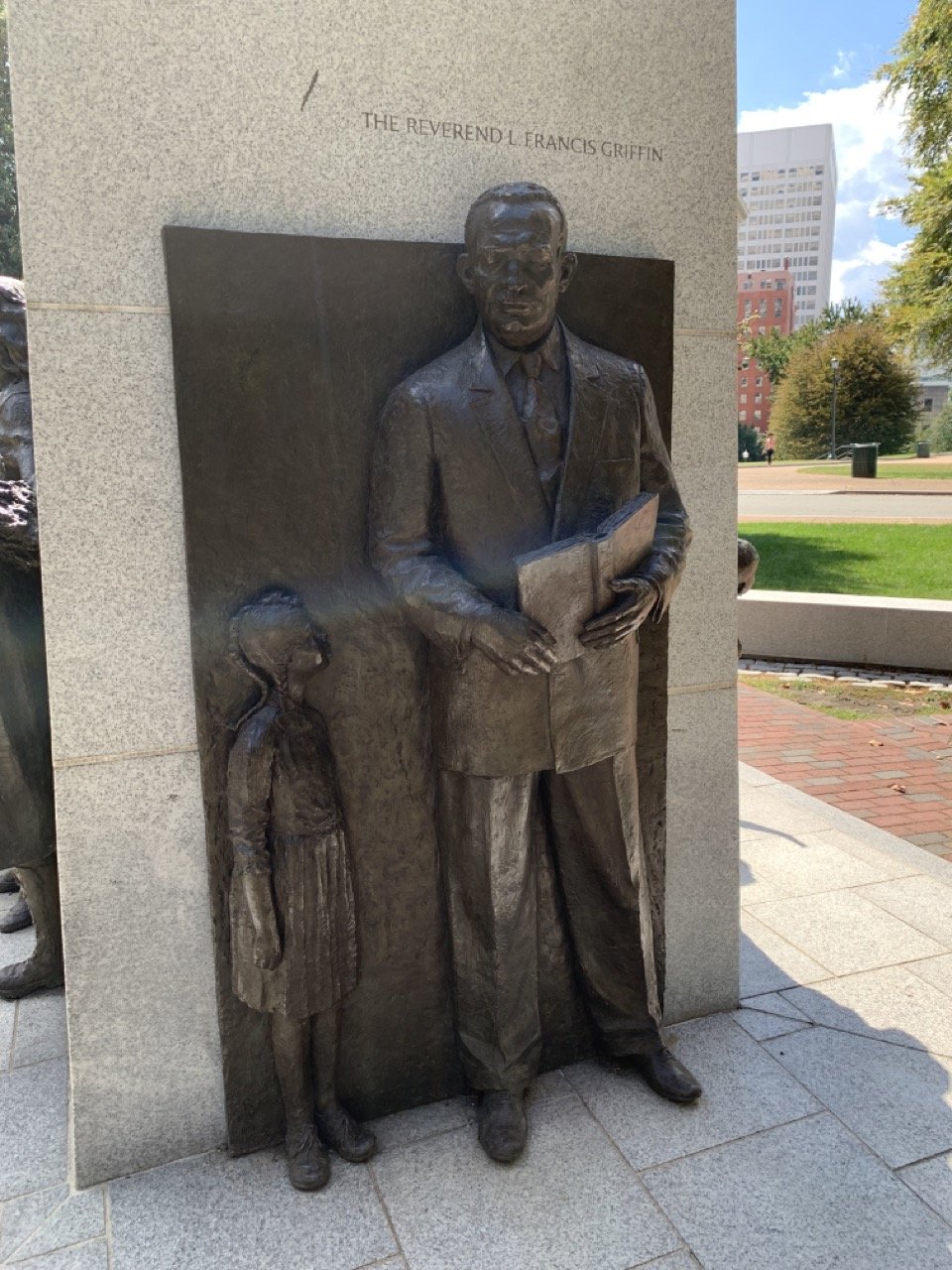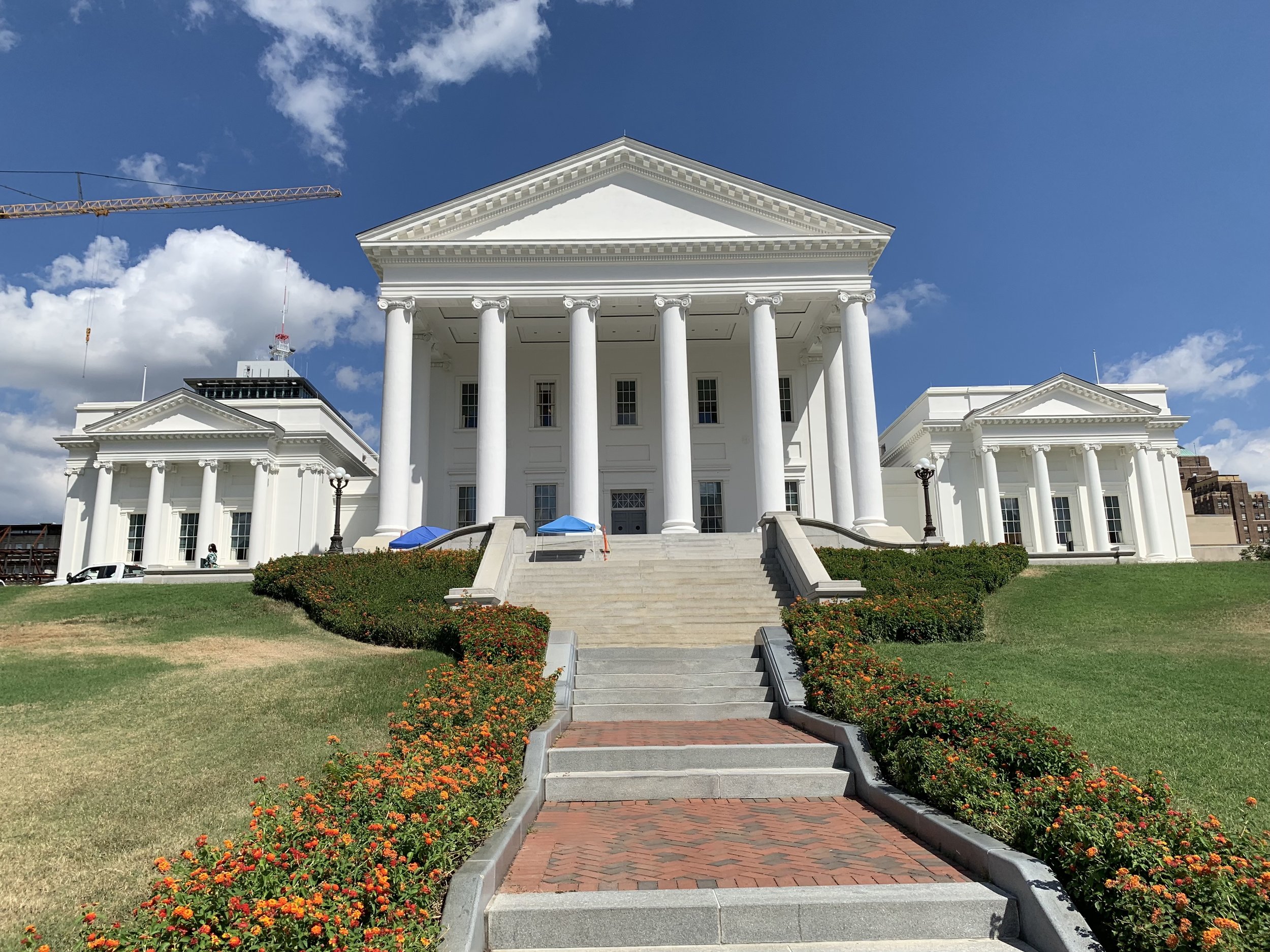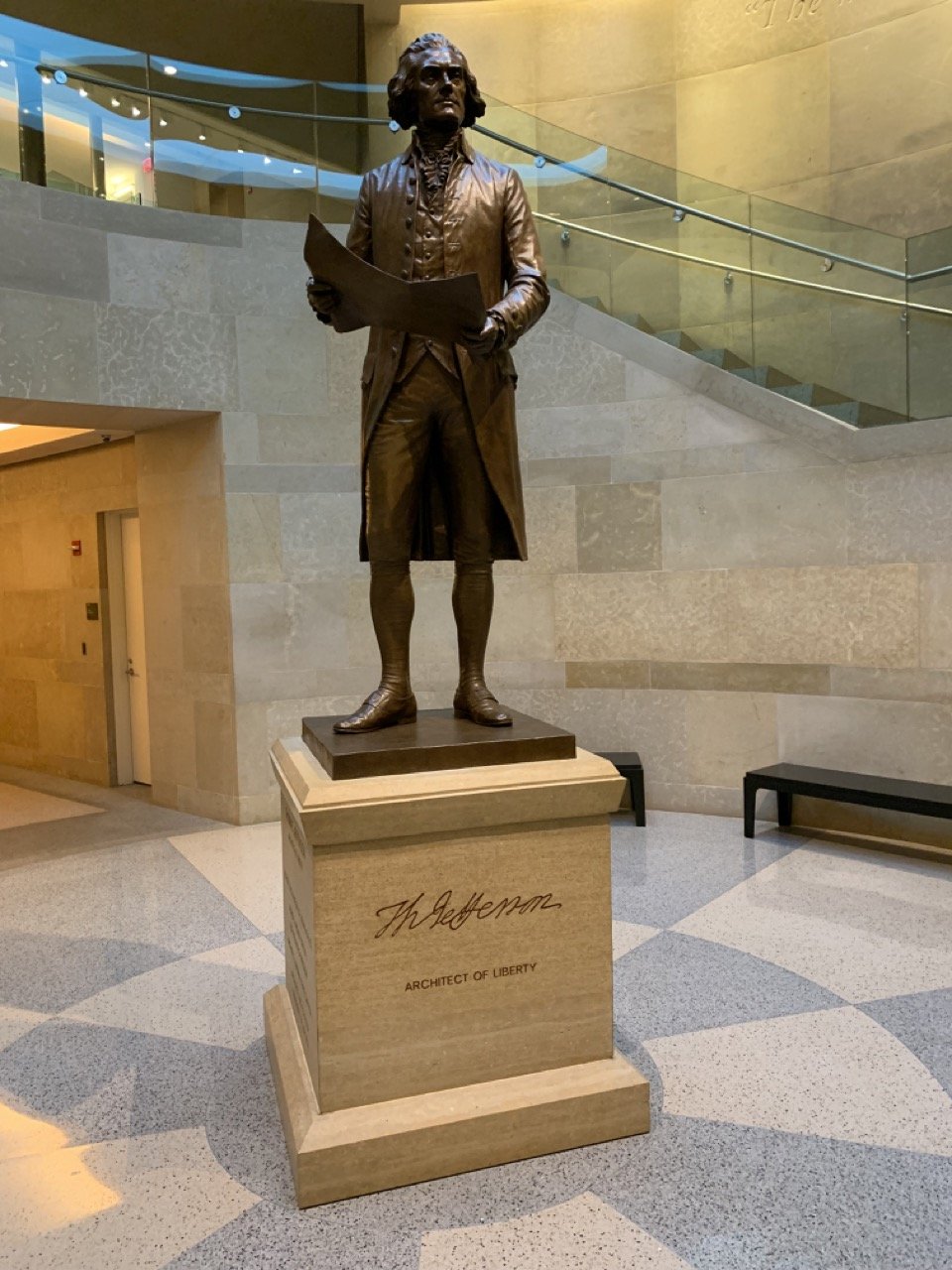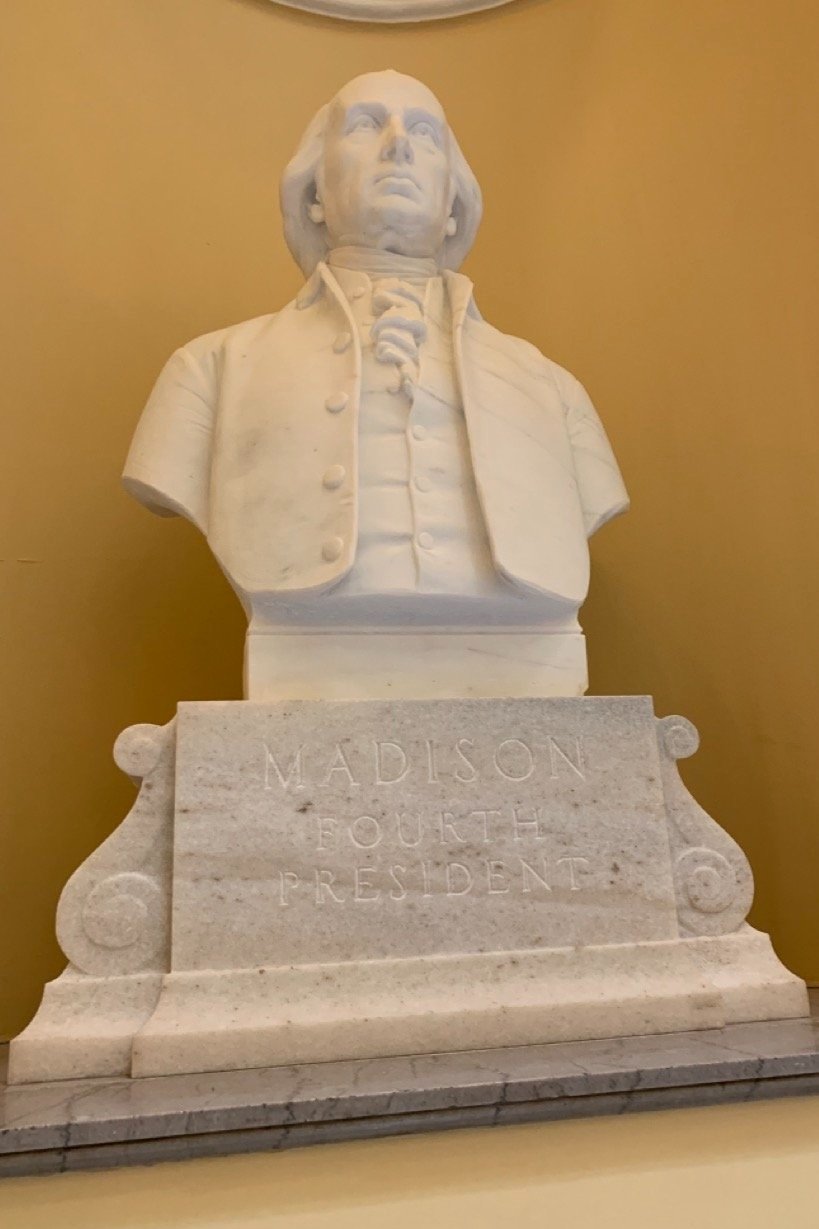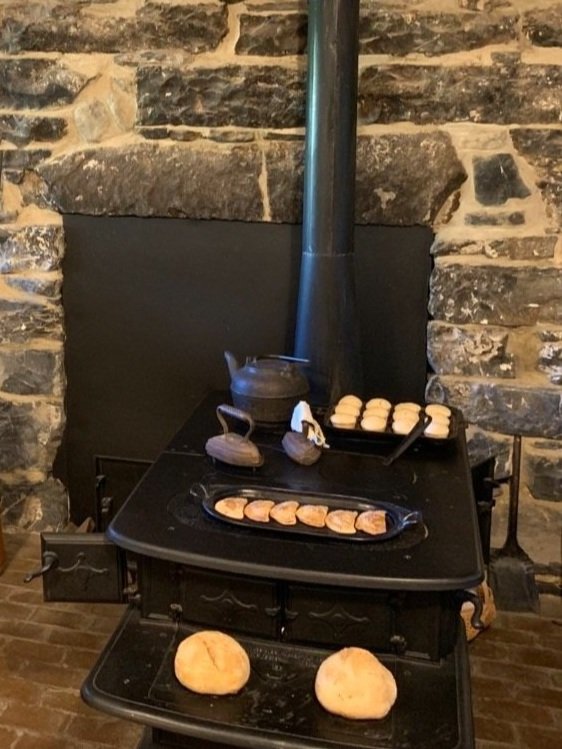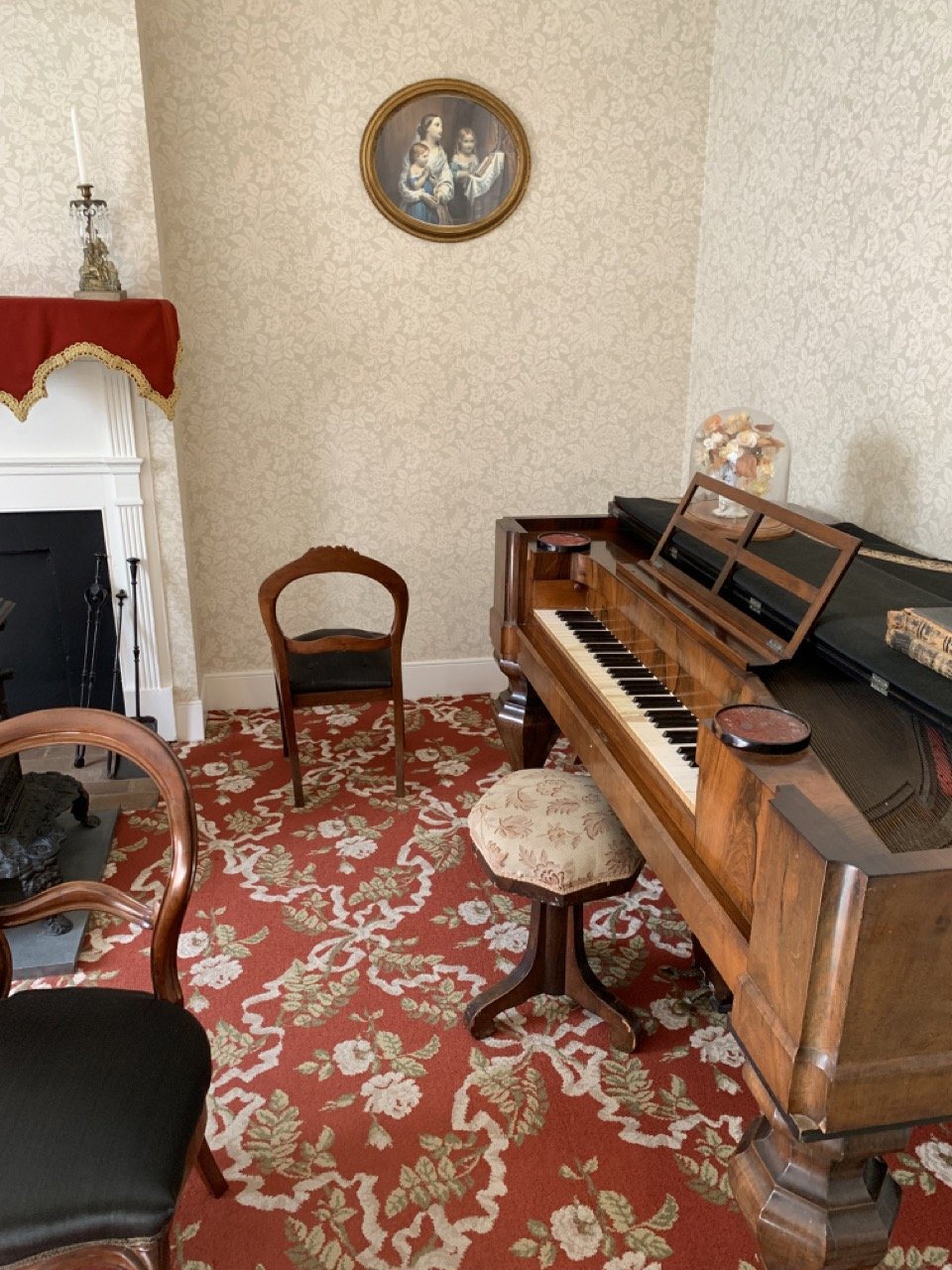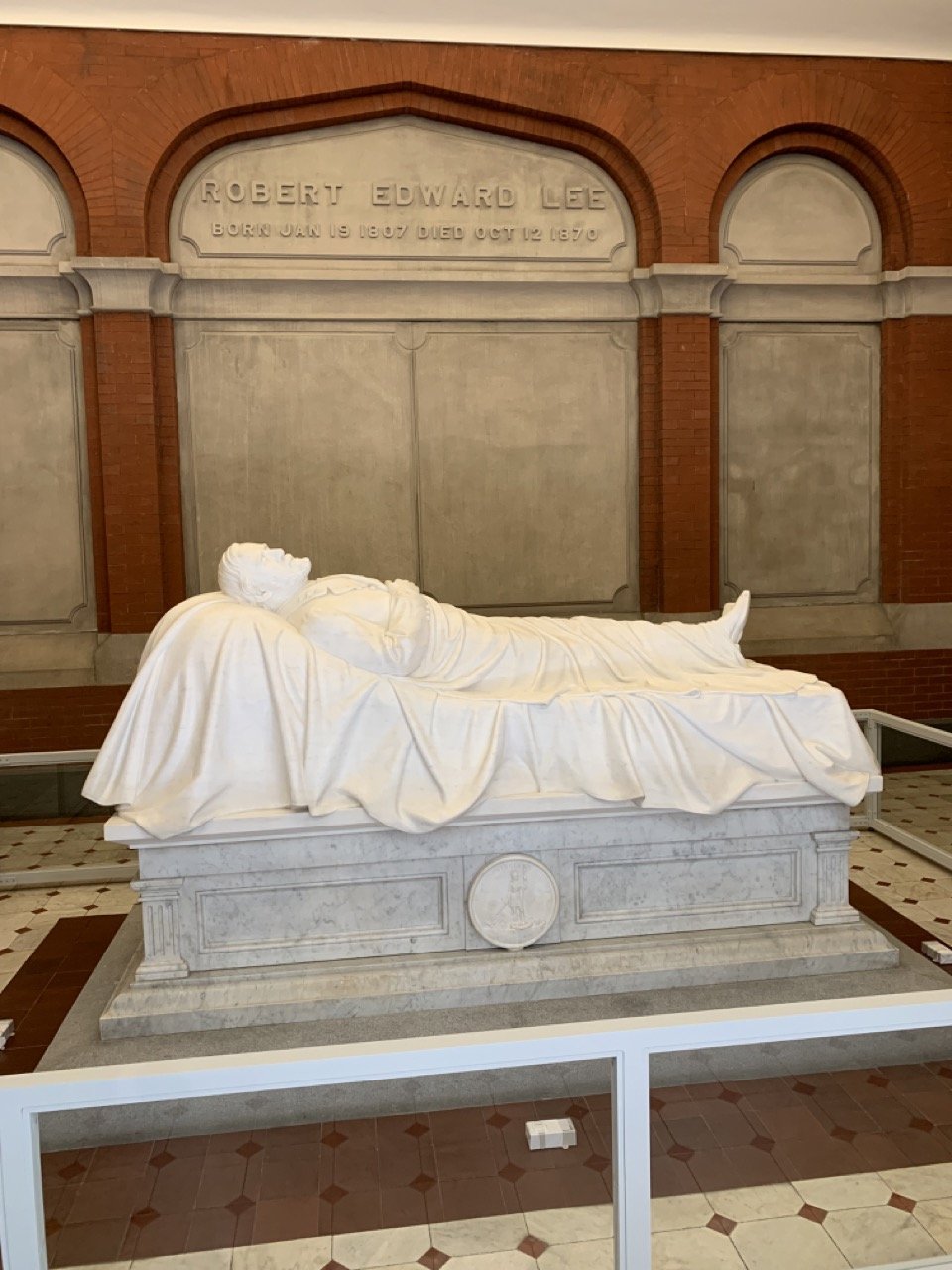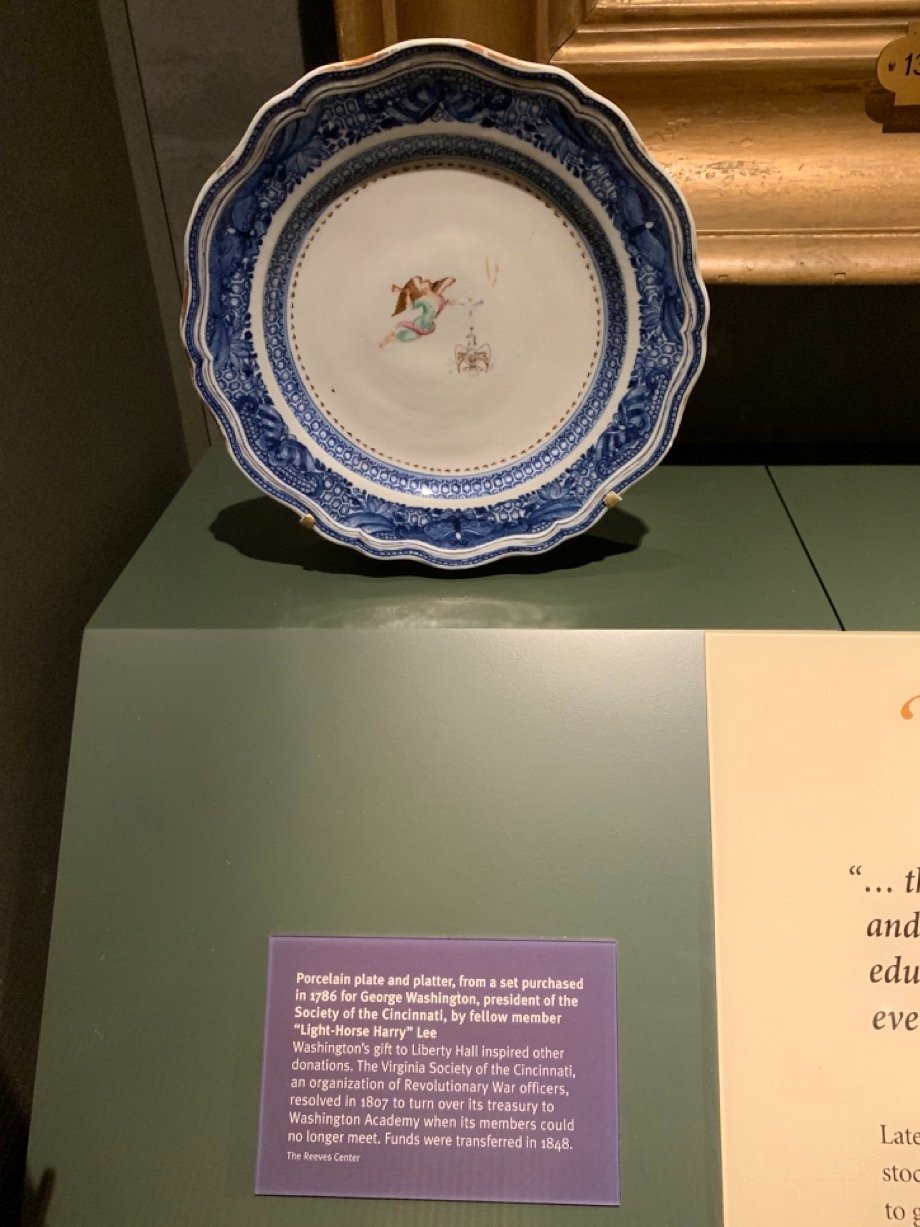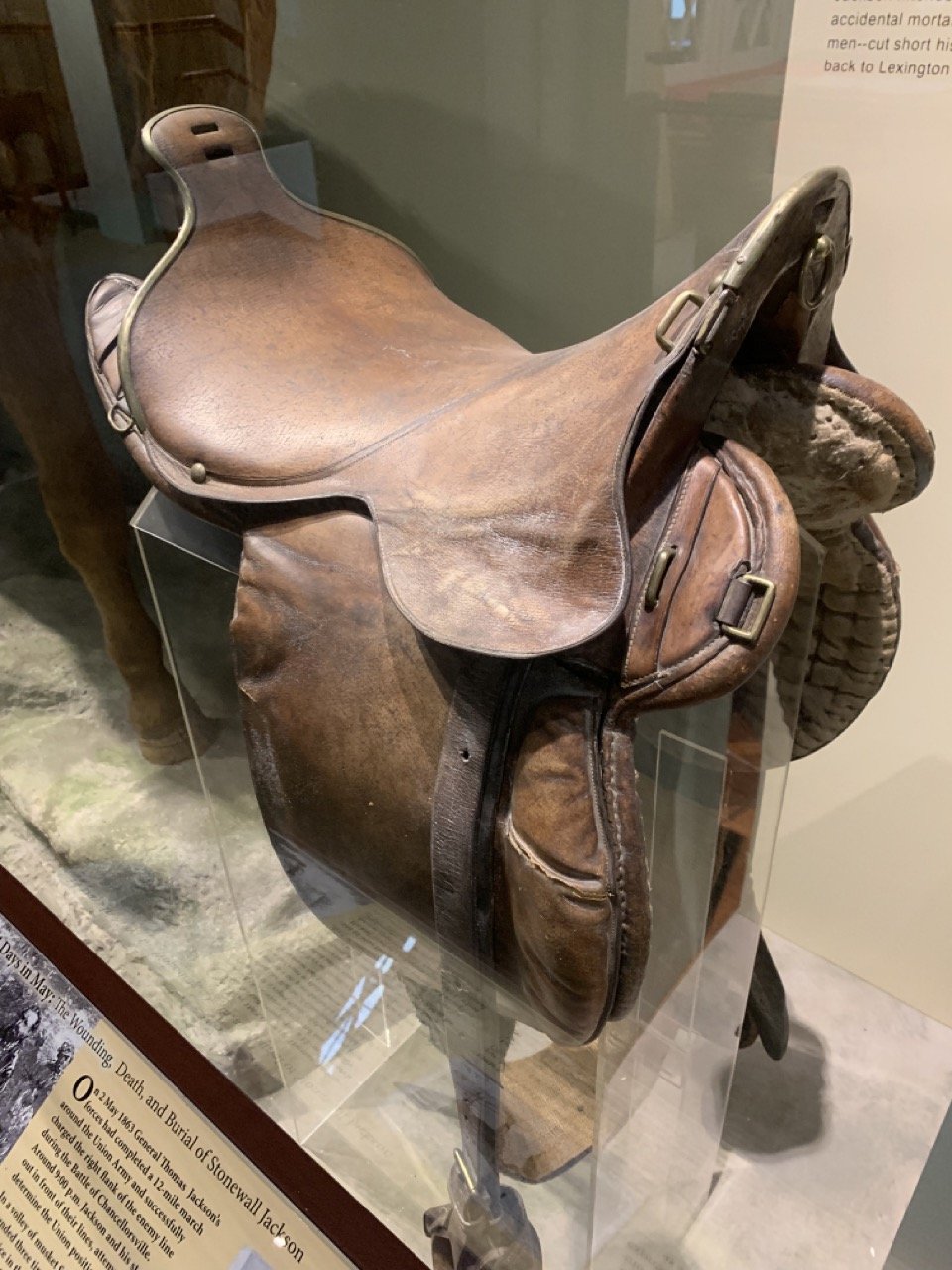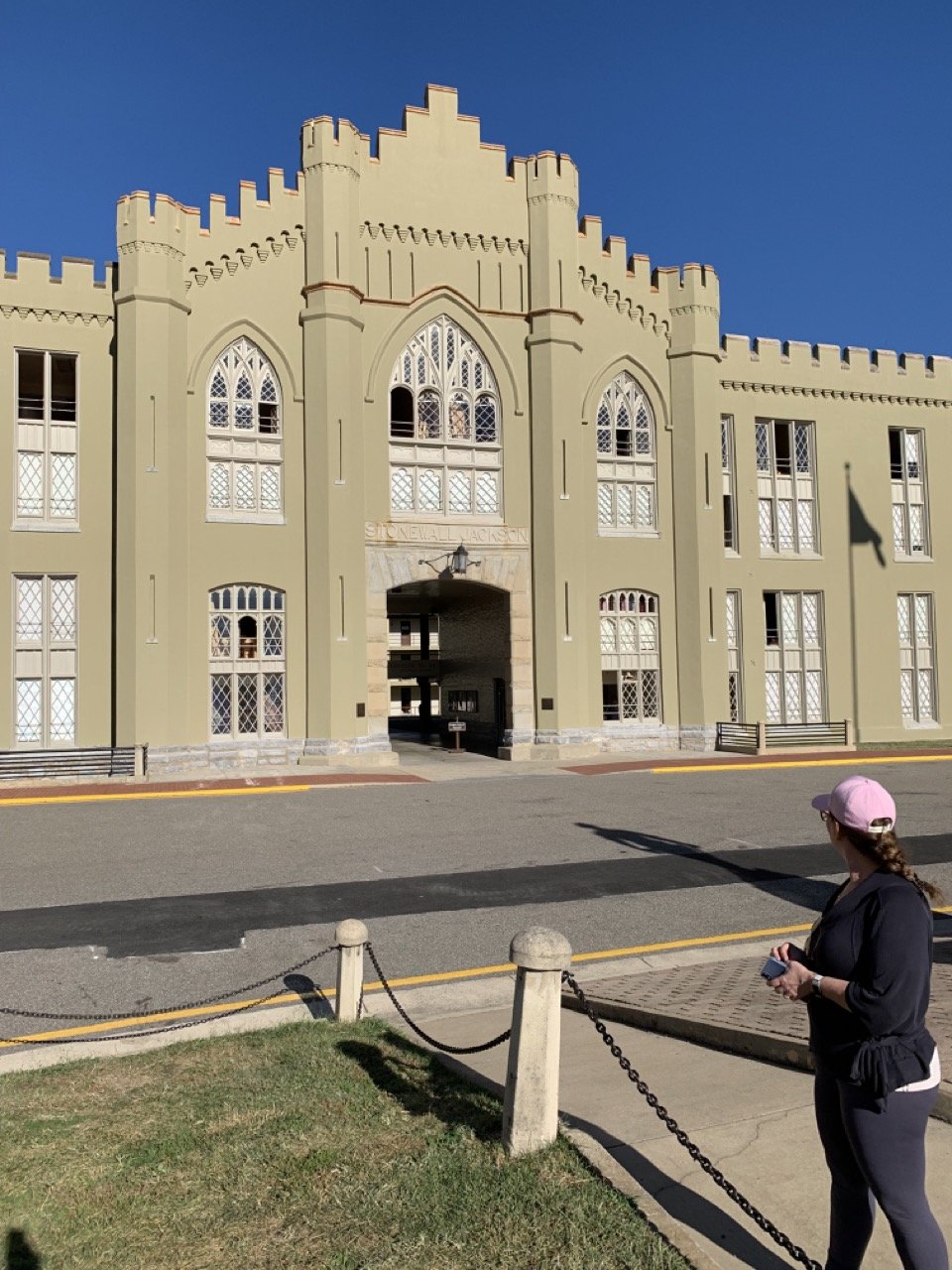Road Trip! Fredericksburg, North Anna, Richmond & Lexington, VA!
In September of 2019 we made the trek to Virginia Beach for a milestone family birthday and of course we made a big loop to hit some fascinating Virginia spots. No way I’m ever driving to Virginia without seeing some history, and much of this trip was Civil War related. We’re going to get into some tricky territory here with much Confederate history (some of which is playing out as we speak in Richmond and at Virginia Military Institute) which were stops on this trip. It’s still often very ugly.
My fascination is always with the history. I typically prefer for the purposes of this blog to try to stay out of the weeds of the politics associated with the views of our history. It’s impossible to ignore it completely and while I have my opinions I try not to be heavy handed with them here. I want to share my love of and considerable knowledge of history and I want that to be the focus. Yes we visited Stonewall Jackson’s home on this trip. I find him fascinating. If I visited Germany and had a chance even as a Jew to visit sites associated with the Third Reich I would absolutely do it, and I do want to get to Auschwitz someday. But at the same time if I saw a statue “honoring” a Nazi leader in the center of Berlin I’d certainly be freaked out and very uncomfortable about it. So please keep that in mind here because we’re going to get into some territory that is contentious for many.
Road Trip! Fredericksburg, North Anna, Richmond, Lexington
Here’s the route from the Detroit area not including the jaunt to see family in Virginia Beach which is an hour and a half southeast of Richmond.
Our first stop was actually in Maryland because if I have the time it’s tough for me not to at least just stop briefly at Antietam in Sharpsburg, MD to see the battlefield. I’ve been there many times so I don’t always have to spend a lot of time, but it’s not really out of the way by much at all and it’s such a significant place. The single bloodiest day in American history. We pretty much just drove over to Bloody Lane and through part of the battlefield because I had other priorities for this trip. Below is a photo from the Confederate position who positioned themselves in the sunken road you see in front of you (where the fencing is) as a natural trench while the Union soldiers assaulted the position in a frontal attack across the cornfield you see beyond. This was “round two” in what was basically a “three round” one day battle in Lee’s first invasion of the North. I won’t get into all the details of Antietam here but I like this photo - it was a gorgeous day in the park that belies the carnage that happened there on September 17th, 1862 - 157 years before this photo was taken. Not that long ago - there’s still a good chance you know someone who knew someone who would have remembered when this happened.
Slaughter Pen Farm - Battle of Fredericksburg
Our timing for the trip didn’t allow for a ton of time on the front end but enough for me to cherry pick some specific spots I wanted to see that I hadn’t before. I’ve been to the Fredericksburg National Battlefield a few times before but it had been a while since my last visit, and in that time the American Battlefield Trust saved and interpreted a 208 acre site critical to the battle which had been slated for commercial development called Slaughter Pen Farm. Fredericksburg was a Union disaster in short because of the unfathomable incompetence of the commander in charge, Ambrose Burnside, and it was fought three months after Antietam between December 11-15, 1862. The Slaughter Pen there is the largest private battlefield preservation project in United States history, taking 16 years and 12 million dollars in fundraising to save! So this is another targeted visit - we didn’t cover the entire Fredericksburg battlefield. They’ve done a nice job with the Slaughter Pen with interpretive markers and a trail, and they knocked down a couple of structures that were built on the land since the war to restore it to it’s original look from the time of the battle.
View from the entrance to the Slaughter Pen - Union position looking towards the Confederate lines
The next 4 photos have two of the historical markers on the field with the corresponding locations looking towards the Confederate lines beneath them.
This visit included another spot I didn’t know was marked and accessible that is known as “Pelham’s Corner”. The Slaughter Pen is the area of the Union assault against Stonewall Jackson’s men on the Confederate right flank. A Union breakthrough in the Confederate lines was ultimately plugged and repelled but it might have been more damaging if Confederate Captain John Pelham of Alabama hadn’t moved forward about a mile east of the Slaughter Pen and with a single artillery cannon (he started with 2 but one was quickly disabled) fired on the Union attack with astounding daring and uncanny precision for at least an hour or two (separate markers at the site say “almost an hour” and “almost two hours”). Pelham had a perfect record of battlefield performance in the war. Like, PERFECT. The “Gallant Pelham” is a fascinating figure, and my mentor Jerry Maxwell, whom I’ve mentioned before (the guy who is responsible for igniting my love of history back at North Farmington High School during the 4 classes of his that I took from 1985-1988) is now the author of the definitive bio of Pelham entitled The Perfect Lion. Mr. Maxwell completed the book and had it published in 2011 after years of research once he retired from teaching and before he passed away. I miss him - he’s the guy I would call before every road trip to find out what off-the-beaten path things I needed to see and he was a friend.
So here’s one of those times it gets tricky. The Civil War is “still being fought” in many ways to this very day. Tony Horowitz covered this topic in great detail in his brilliant book Confederates In The Attic: Dispatches From The Unfinished Civil War in 1998 - well before the current superheated political climate. It’s crazy that when I share my blog posts, inevitably I’ll be accused of subscribing to Lost Cause ideology by some if I say anything positive about Confederate leadership MILITARILY. In my mind, there are many cases where Confederate military superiority in leadership is indisputable. It’s unfortunately part of the reason the war lasted as long as it did. I am also aware, however, that Jerry Maxwell was definitely biased in this regard. I’m still in agreement with him on most of it, but I will allow that as I go back in my notes which I still have and still reference I can see that he goes against a few opinions on some Union Generals that have been reexamined and are relatively widely held. Maxwell couldn’t STAND Sherman or Sheridan for example and didn’t have a ton of great things to say about Grant. I still find it difficult to be swayed otherwise in many cases - and believe me, it’s not because I “like” the Confederacy ideologically. I try to be as objective as I can be and many of my opinions are informed by books I continue to read and my visits to the battlefields themselves. As of this writing I’m reading Ronald C. White’s bio of Grant - I know I’m in for some Grant love with this one. I’m ready and willing to be swayed a little and reassess.
But back to Fredericksburg and Pelham. I highly recommend Maxwell’s bio - maybe I’M the one who is biased on this but I could put myself right back in Maxwell’s classroom with him sitting elevated in the corner storytelling and Pelham’s actions at Fredericksburg are covered in detail, so for me it shot to the top of my favorite Civil War books. Pelham’s actions are also covered and marked at the site where it happened in great detail - what he did here is almost beyond belief and really brings home the idea that this war was still very much about people. Not just monolithic armies simply charging at each other and the ensuing carnage. I brought the book with me for reference and I showed it to the folks at the gift shop there in the visitor’s center - I told them they need to be selling it. I took a photo of the book at the spot and sent it to Mr. Maxwell’s family - it’s a great contribution to Civil War scholarship.
A couple of footnotes here: I mentioned above that before this trip I was unaware that Pelham’s Corner existed with interpretive markers and here’s an article that details the preservation efforts that have been actively going on to preserve the corner over the last couple decades. I’ve also embedded the animated map of the Fredericksburg battle from the American Battlefield Trust which is really good and I’ve teed it up to where Pelham’s exploits occur to give you a sense of how he came so far forward of the Confederate lines, and you can get a sense of his position in relation to the Slaughter Pen to understand the part of the battlefield our visit represents on day 3 (the bloodiest day) of the Fredericksburg battle.
North Anna Battlefield Park
Next stop was a battle you don’t hear a ton about in Grant’s 1864 Overland Campaign against Lee and that’s the Battle of North Anna River. This battle was fought after and south of the massive battles at The Wilderness and Spotsylvania Courthouse as Grant kept his foot on the gas no matter the results or the number of casualties, taking the fight to the Rebels inching closer to Richmond and ending the war by attrition. North Anna wasn’t as consequential in scope by itself as the two previous colossal clashes but with 4200 casualties in a couple days it was no mere skirmish either, and it’s also interesting tactically. The Confederates deployed an inverted “V” to split the advancing Union army with a ton of earthworks/trenches built for defense on the south side of the North Anna River. The plan worked and after the fighting came to a stalemate, Grant, recognizing the strength of the Confederate position, pulled back and marched to the East to outflank the Rebels towards Richmond. This was the difference - when Grant was summoned east by President Lincoln it was to relentlessly pursue and fight Lee - Grant was intent on doing this with his superior numbers until he brought them to a surrender. Lee wasn’t able to breathe for a bit and regroup after fending off an attack like he was able to do earlier in the war. Yes, it was a different set of circumstances in 1864, but in 1862 when McClellan finally attacked Richmond in the Peninsula Campaign, seven days of fighting and repulsing “Little Mac’s” army was enough to compel McClellan to abandon the campaign. Not Grant in 1864.
I tried to visit this site years ago by myself and had a little trouble finding it, and when I did I had no cell signal and felt like I was deep in the middle of nowhere. I got a little nervous and bailed lol… But this time I had Ally with me and the place is pretty well marked - there’s a nice little parking area which I kind of remember from the last time, but who knows haha.
In any event the battlefield, while overgrown with a forest that doesn’t represent how it looked at the time, is still covered in really well preserved earthworks that are pretty incredible to see, though my photos don’t really do them justice. As this basic battlefield trail map shows, there are basically two trails that follow the positions of the two opposing forces. We were limited on time so we followed the grey trail from the parking lot, and I would still like to get back to the blue trail.
An overview of Day 1 - maneuvering into position…
These prints at each of the stops along the trail are fantastic at telling the story, along with the “You Are Here” markers on the map to help you understand. As you can see, we are approaching the Confederate lines here as the positioning into the inverted “V” is taking place throughout the day of May 23rd, 1864.
The inverted “V” takes shape. The fight is about to begin the next day on May 24th
In a classic case of the blind leading the blind, we once again encounter Ambrose Burnside as he sends drunken idiot Brigadier General James Ledlie with a brigade of Massachusetts soldiers to cross the river North of Ox Ford since Ox Ford was impenetrable at the point of the inverted “V.” Ledlie was wasted, and as told on the exhibits, was operating on what the soldiers called “Dutch Courage” (whiskey) as he ordered the 35th Massachusetts to attack the entrenched Confederates. They got slaughtered of course, which then provoked the drunken Ledlie to…….order more attacks during which a thunderstorm rolled in. This is the scene that played out along most of the portion of the trail we took.
Here at stop 3 you see on the map where Burnside sends Ledlie to cross the river and where Brigadier General Samuel W. Crawford moves to provide cover and support for Ledlie’s crossing at 2 PM. While they are doing this, sharpshooters from Virginia and Alabama move forward to check Crawford’s men while the Confederates continue to dig trenches at the spot of this marker - here are two photos of some of those trenches below:
You can see on the next map as we arrive at stop 4 we are approaching the portion of the Confederate line that easily repulsed Ledlie’s attacks….
As we approach stops 5 and 6 we arrive at the center of the slaughter of Ledlie’s men and we read about the drunken general getting even more belligerent, sending more assaults against orders. It gets to the point where the Confederates don’t even bother firing on them until they get close because it’s so easy, taunting them with shouts of “Come on Yank! Come on to Richmond” before mowing them down… jeez…
Here are two more photos of trenches - these are at the center of Ledlie’s assaults from the Rebel position along stops 5 & 6:
Things get….really bad….
The slaughter ends in the muddy ravine ahead….
As mentioned in the park map details, Ledlie was not reprimanded for his performance here, but promoted to brigadier general instead. Later, at the Battle of the Crater in Petersburg, he was found hiding in a bunker during an attack and driven from the Army in disgrace.
So while the battlefield can be a bit of a challenge being all forest, they’ve done such a solid job of marking the trail and telling the story that with the earthworks all around I still highly recommend this stop, and we saw less than half of the park. There are 23 stops along the trail with the grey and blue combined and I only covered 7 of them here. I definitely hope to return.
On to Richmond (Ally and I - not Grant)
From here we finished the drive to Virginia Beach to visit with family and friends before turning back west to hit some more sites… starting with Richmond, VA. I had driven past Richmond and visited most of the surrounding battlefields but had never really ventured into the city, and there is SO much to see there - more than we had time for, but we had never been to the capitol building and that was really something.
For starters there is the incredible George Washington statue that Abraham Lincoln stood and admired when he entered Richmond on April 4th, 1865 after the fall of the city. That was an incredible thing to picture - imagining Lincoln standing in that same spot admiring that same statue just as I was on the occasion of the end of the Civil War when he was welcomed in the Confederate capitol as a hero (a mere 11 days before he was tragically assassinated). Apologies for the photo on the right not being tack sharp but it’s the only one I have from that day with that view.
The capitol building is surrounded by monuments and Richmond has taken its share of criticism and controversy over Confederate statues on Monument Avenue (which we didn’t make it to and which have all since been removed) as well as on the capitol grounds and inside the building. The only remaining statue on Monument Avenue is of African American tennis legend and Richmond native Arthur Ashe, which spurred controversy as well… from racists who didn’t want his statue there and activists who said no way would Ashe want to be there. I want to include this video I found online which is a fascinating conversation about Monument Avenue and the Lost Cause mythology that I think is relevant to this blog post for context for Richmond as well as for the visit to Lexington, which largely centers around both Lee and Jackson.
There are still three Confederate statues on the capitol grounds including this one below of Stonewall Jackson - here is a status of all the Confederate statues in the D.C. / Maryland / Virginia region (the DMV) as of December 2022. Think back to my analogy of a statue of a Nazi leader in the center of Berlin (none exist by the way)…. Jackson was a slaveowner and fought against the Union and for the Confederates. You can’t simply dismiss why this is problematic for many.
There is however a beautiful monument to the Civil Rights movement and Barbara Johns. I knew nothing about who she was then, but I certainly do now - her story has gained the prominence it deserves as of late. As a 16 year old high school student attending a segregated school for African-Americans, she organized a protest against the horrible conditions at her school in Prince Edwards County, VA, which were nowhere near the quality of the beautiful facilities at the white school. Helped along by the Reverend L. Francis Griffin and NAACP attorneys Oliver Hill and Spottswood Robinson, her case eventually was combined with others as part of the landmark case Brown V. Board of Education which ruled school segregation unconstitutional. Some have pointed to her case as the beginning of the 20th century Civil Rights Movement in America. For context, this 16 year old girl organized that strike at her school on April 23rd, 1951. Rosa Parks refused to give up her seat in the white section of a Montgomery, Alabama bus over 3 1/2 years later (!) on December 1st, 1955. In 2020, Virginia chose to replace a statue of Confederate General Robert E Lee with one of Barbara Johns in the United States Capitol’s National Statuary Hall Collection.
The Capitol Building itself in Richmond which Thomas Jefferson designed is quite a place - the first state capitol to open after the American Revolution.
These statues of Thomas Jefferson were added when they renovated the building in 2012. It seems to me that he’s supposed to be holding a copy of the Declaration of Independence, of which he was the primary author and I think the text is supposed to be visible on the document looking over his shoulder but it’s hard to make out in the photo.
The Rotunda is striking indeed and the placard above is a pretty good overview.
Panoramic pic beneath The Rotunda of the Virginia State Capitol
Lastly on the Capitol Grounds we took a look at the Executive Mansion which is the oldest continuous Governor’s mansion serving in that capacity in the country. As the plaque says, the present house was built in 1813 and 3 presidents lived at the site.
After a yummy vegan burrito at the 821 Cafe by the VCU campus, we were on our way - next stop Lexington.
Lexington, VA
There’s a lot of history in Lexington, VA which is home to two universities that are literally right next to each other - you cross a sidewalk to get from Washington & Lee University to Virginia Military Institute. Cadets from VMI rushed to the New Market Battlefield to fight in that battle on May 15th, 1864 - the battlefield and the Hall of Valor Museum at New Market are worth a visit but that’s for another time.
Robert E. Lee served as the president of Washington & Lee University after the Civil War and Stonewall Jackson taught at VMI and lived in Lexington before the war, so the museums there combined with the beautiful campuses and the Jackson home which you can tour combine to make Lexington a worthwhile visit for history buffs.
We’ll start with Jackson’s home. This was the home he and his second wife Mary Anna Morrison lived in from 1859 to 1861 until he left for the war (his first wife died in childbirth). A few notes about the photos below: As far as I can tell there are only about a half dozen or so photos that were made of Jackson throughout his life. I don’t know the exact number, and there may be one or two that are in question as to whether they are him…I don’t think the others are actually him. But this one on display in his home from 1857 is one I hadn’t seen - you have to really search to find it online. Much of the furniture is original - I don’t have notes from my photos unfortunately - I guess I wasn’t planning a blog when I took them and can’t recall specific details but for the most part if I photographed it, it was original. A couple of the more interesting artifacts were the straight razor and mirror he used in Mexico in the field fighting in the Mexican War and the locks of both his and Mary Anna’s hair.
As we walked from Jackson’s house to Washington & Lee University a plaque on the sidewalk stopped me in my tracks…
As a Jew I thought oh that’s pretty cool - a little acknowledgment of the 1st Jewish cadet at VMI! I actually didn’t give it much thought since that trip but now that I’m blogging about it I looked him up - and let’s just say that once I did it became clear I needed a separate blog post to tell the story of what happened next… His story and what has happened with regard to it as a result of me Googling him…. It’s quite remarkable… You need to check it out.
A few more thoughts on how we consider our history here. I don’t want to cancel vital elements of our history and not learn from them - heck I just showed you photos of a Confederate General’s house who was a slaveowner. But do I do it because I like what he represents ideologically? Absolutely not. Should he have a massive statue on a residential avenue in Richmond that was absolutely designed and built to revive Confederate pride during the time of Jim Crow and a need in the south to prop these men up as the heroes fighting for the right to the southern way of life including slavery? Hell no. If you’re triggered by me saying that then YOU have the problem. YOU are the one not looking at this pragmatically. Should he have a statue on the battlefield where his actions were of major consequence to the direction of the country like at Bull Run? Actually I’m not totally sure of the answer to that either. But I’ll say this - when I was 16 and saw it for the first time I was in awe of it and didn’t think about it with the depth I do now. I guess you could say it’s less inappropriate at Bull Run than it was on Monument Avenue which they planned an elite residential area around, but frankly if they removed the one at Bull Run I wouldn’t fight it and here’s why:
Monuments to acknowledge the soldiers who fell on those battlefields from both sides is one thing in a conflict that tragically pitted brother vs. brother in some cases. A massive heroic-looking statue (the only one that prominent at Manassas) of the Confederate commander who rallied troops to give the win to the rebels that was erected in 1940? Hmmm…. A Stonewall Jackson statue in and of itself isn’t “our history,” and we wouldn’t be erasing our history by taking it down. The idea for it didn’t even come about until 1936 in Virginia. It was the Virginia General Assembly that appropriated the money for it. It was the Virginia Museum of Fine Arts who conducted the search for the design of the statue. It sits in what is now a National Park but it was certainly not a “national” endeavor at the time. It seems to me it’s pretty hard to deny it was motivated by the Lost Cause. The Confederate monuments on Monument Avenue we discussed earlier that are all gone now? They were unveiled in 1890, 1907, 1919, and 1929……..and 1936 was the year the idea for the Jackson statue at Bull Run only 99 miles away came about. Notice a pattern here at all? If we removed it we would only be erasing how we revere and consider such dark chapters of our history. Nothing wrong with a detailed marker at the spot that explains what Jackson did there that day like the ones at North Anna for example. The history would still be there to learn about maybe in a more appropriate way. Hell there is a less accepted version of the story that states General Bee said “There stands Jackson like a stone wall” because he was doing just that - nothing. I actually don’t believe that - it’s hard to argue against Jackson being a superior general overall and even though it was the first battle of the war it wasn’t his first time in battle - he wasn’t nicknamed the “Mexican Killer” after the Mexican War battle of Chapultepec for nothing (from my notes from Jerry Maxwell’s civil war class). If you subscribed to the latter story wouldn’t you also have to agree that he was at that spot doing nothing where the tide of the battle just happened to coincidentally turn then? No, I’ll stick with the story that he indeed inspired his men not to budge and to hold the line. I don’t think that’s just southern myth making. Putting a massive heroic looking statue there as the most representative landmark of the landscape to revive Confederate pride many decades later? Now that’s southern myth making… and it’s bullshit.
The campuses of Washington & Lee and VMI are gorgeous and the museums are fascinating. Let’s start with what we saw at Washington & Lee:
Washington & Lee University
The history of the university is tied to both George Washington and Robert E. Lee both of whom are indeed the namesakes of the institution. Let’s let them tell the story of their history and how they feel about it at this link - I encourage you to read it - I think it’s pretty good in that they acknowledge and address the complexities therein. Once again, it’s tricky. Neither of them simply get a full pass for being slaveowners and Lee for choosing to fight for the Confederacy by the school they are named for. Lee was the president of the university from 1865 to 1870 and he transformed the place in many ways. His office is still there, he along with many family members are buried there, and so is his horse, Traveler. There are many artifacts on display relating to Lee, a few of which I’ve included below. The statue of The Recumbent Lee was unveiled by Stonewall Jackson’s daughter Julia Jackson in 1883 - it recreates the scene of Lee lying in state in the chapel after he died in 1870. Also pictured below is a porcelain platter from a set purchased in 1786 for George Washington by Lee’s father Henry “Light-Horse Harry” Lee (who was a Major General in the Revolutionary War and the 9th Governor of Virginia), a pistol from a pair George Washington gave to G.W.P. Custis who in turn gave them to Robert E. Lee, the actual vest Lee wore in an accompanying portrait, and a family tree showing the relationships between the Washington, Custis, and Lee Families.
Virginia Military Institute
VMI was founded in 1839, becoming the nation’s first state-sponsored military college. George C. Marshall was an alum as well as George Patton’s father and grandfather, and Stonewall Jackson was a professor there as I mentioned earlier. There is an extensive collection of Jackson artifacts at the museum there including the raincoat Jackson was wearing with the bullet hole in it from when he was mortally wounded (mistakenly by Confederate troops) at the battle of Chancellorsville along with his horse Little Sorrel. And I don’t mean Little Sorrel is buried there - Little Sorrel is actually on display there. His camp stool and his saddle (which may have been the one he was riding the night of his accidental wounding) are there along with many other items. Jackson was not the best instructor of Natural and Physical Philosophy (Physics) but he was an exceptional artillery instructor and the 6 cannon made especially for VMI while he was there are on display in front of the old barracks that date back to 1848. You’ll also see below the statue of Jackson in front of the barracks that is no longer there.
VMI removing the Stonewall Jackson statue was a big deal for a place so closely tied to him. This article in the Washington Post entitled “At VMI, two classmates — one Black, one White — war over school’s future” from this past February is an intense piece on the still developing story. State-ordered investigations of a racist environment at VMI, a former VMI basketball star and its first black leader under fire from a white 1985 fellow “Brother Rat” which is what cadets call each other there, the decision to remove the statue, accusations that the diversity initiatives are going to ruin VMI by a new PAC called “The Spirit of VMI” formed to push back against these initiatives. The story seems to be a microcosm of much of what I’ve covered in this piece from this trip and mirrors what we see happening in many corners of our country… It sucks.
So… there you have it. A lot to unpack and a lot to digest. I did not realize where this post was going to take me as I sat down to write it. As you can see I’m always traveling and pursuing historical sites and knowledge, and with this particular trip being 4 years ago - before the pandemic - I hadn’t thought about it in great detail since. That’s actually part of the enjoyment of this blog for me because I get to revisit these trips, consider the topics further and share them with you! Let me know your thoughts below and keep them measured. I won’t tolerate raw anger and hate in the comments.
M10 Social is owned by Doug Cohen in West Bloomfield, MI and provides social media training and digital marketing services from the Frameable Faces Photography studio Doug owns with his wife Ally. He can be reached there at tel:248-790-7317, by mobile at tel:248-346-4121 or via email at mailto:doug@frameablefaces.com. You can follow Doug’s band Vintage Playboy at their Facebook page here.
******************************************************************************************
Tune in to the 📷Doug&Ally📷Morning Show T-F between 8:30 & 11 EST UTC-4 on Heckle by following them on Heckle or Twitter at @frameablefaces! Also check out the Doug & Ally Morning Show podcast at anchor.fm/frameablefaces and everywhere you listen to podcasts! Doug also tweets at @dougcohen10 and @M10Social!
